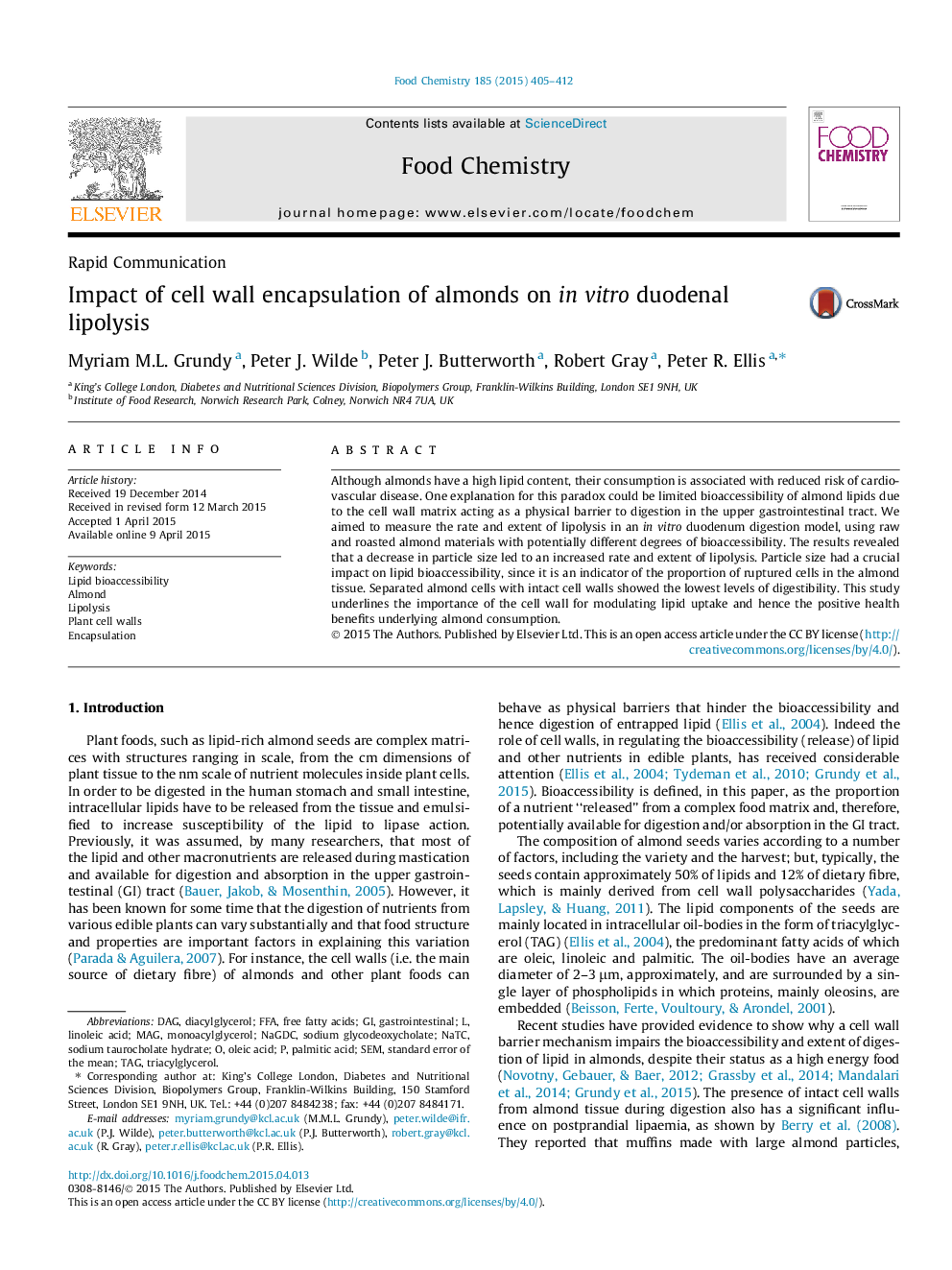| Article ID | Journal | Published Year | Pages | File Type |
|---|---|---|---|---|
| 7591126 | Food Chemistry | 2015 | 8 Pages |
Abstract
Although almonds have a high lipid content, their consumption is associated with reduced risk of cardiovascular disease. One explanation for this paradox could be limited bioaccessibility of almond lipids due to the cell wall matrix acting as a physical barrier to digestion in the upper gastrointestinal tract. We aimed to measure the rate and extent of lipolysis in an in vitro duodenum digestion model, using raw and roasted almond materials with potentially different degrees of bioaccessibility. The results revealed that a decrease in particle size led to an increased rate and extent of lipolysis. Particle size had a crucial impact on lipid bioaccessibility, since it is an indicator of the proportion of ruptured cells in the almond tissue. Separated almond cells with intact cell walls showed the lowest levels of digestibility. This study underlines the importance of the cell wall for modulating lipid uptake and hence the positive health benefits underlying almond consumption.
Keywords
Related Topics
Physical Sciences and Engineering
Chemistry
Analytical Chemistry
Authors
Myriam M.L. Grundy, Peter J. Wilde, Peter J. Butterworth, Robert Gray, Peter R. Ellis,
